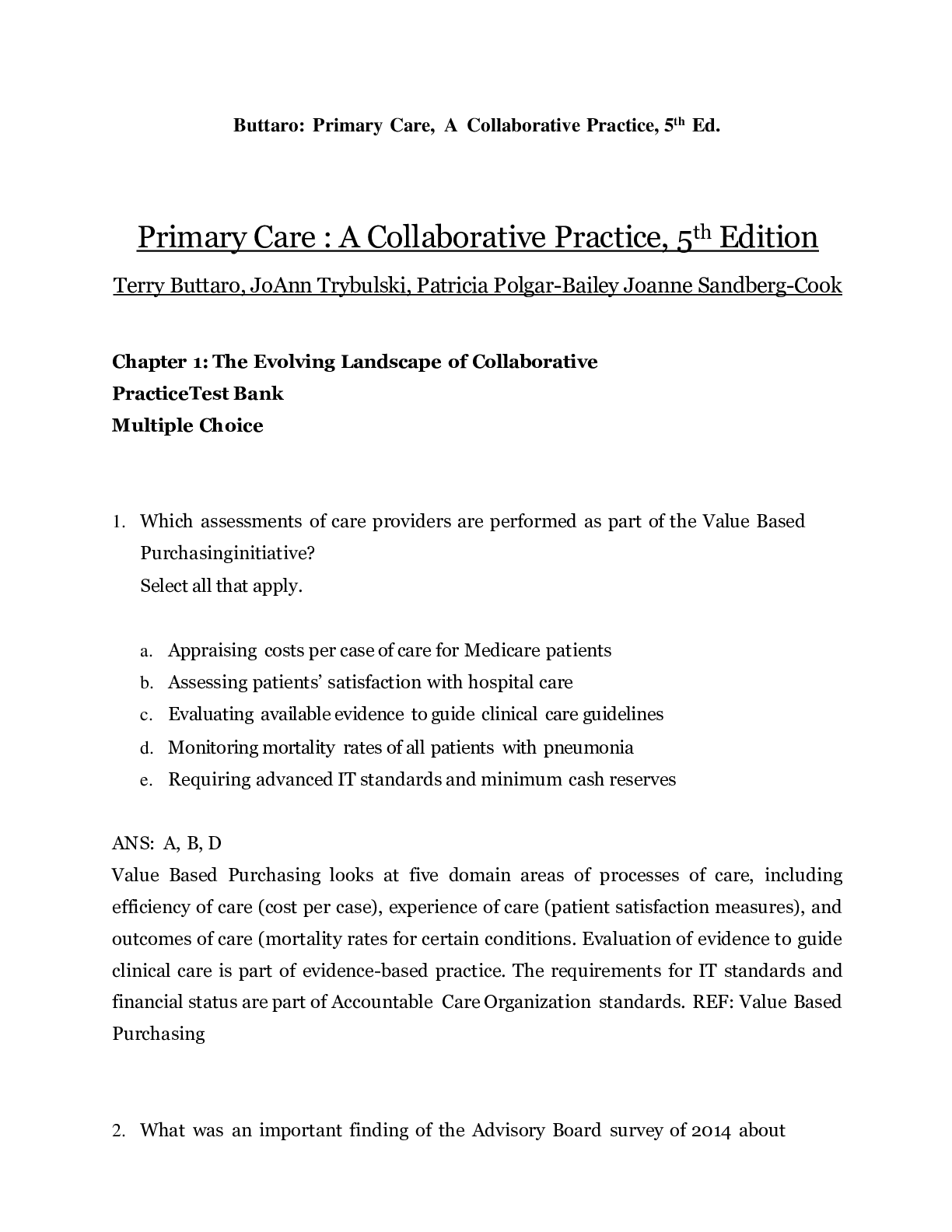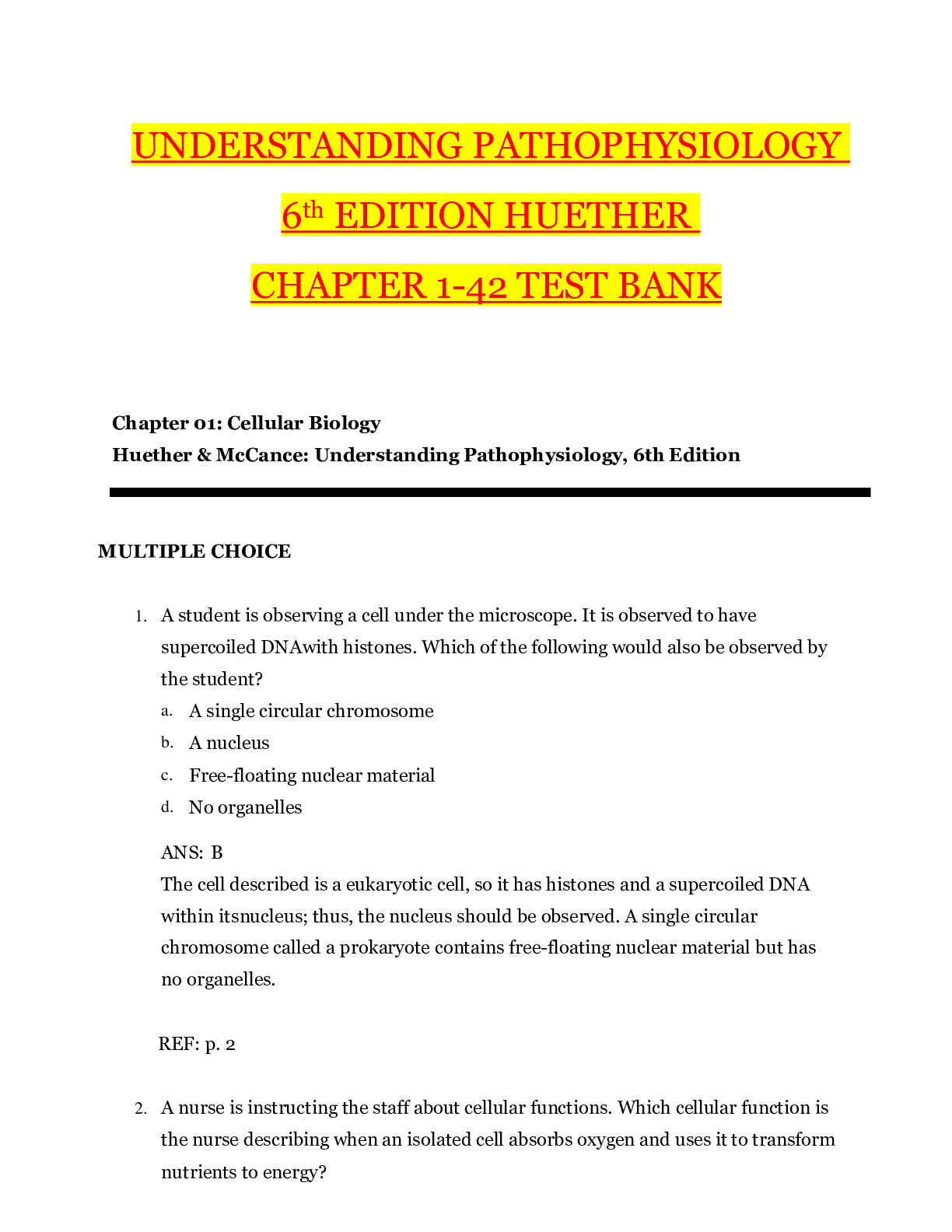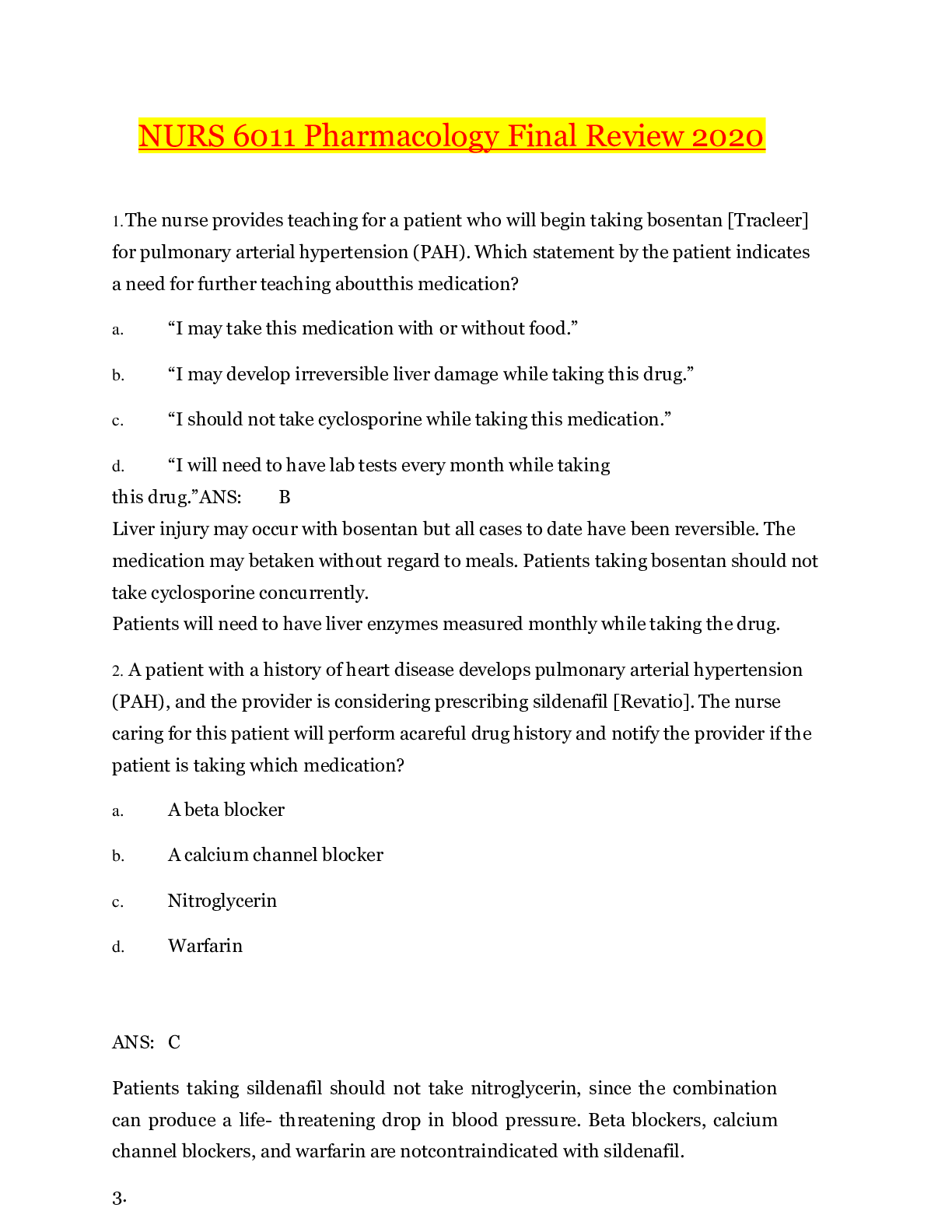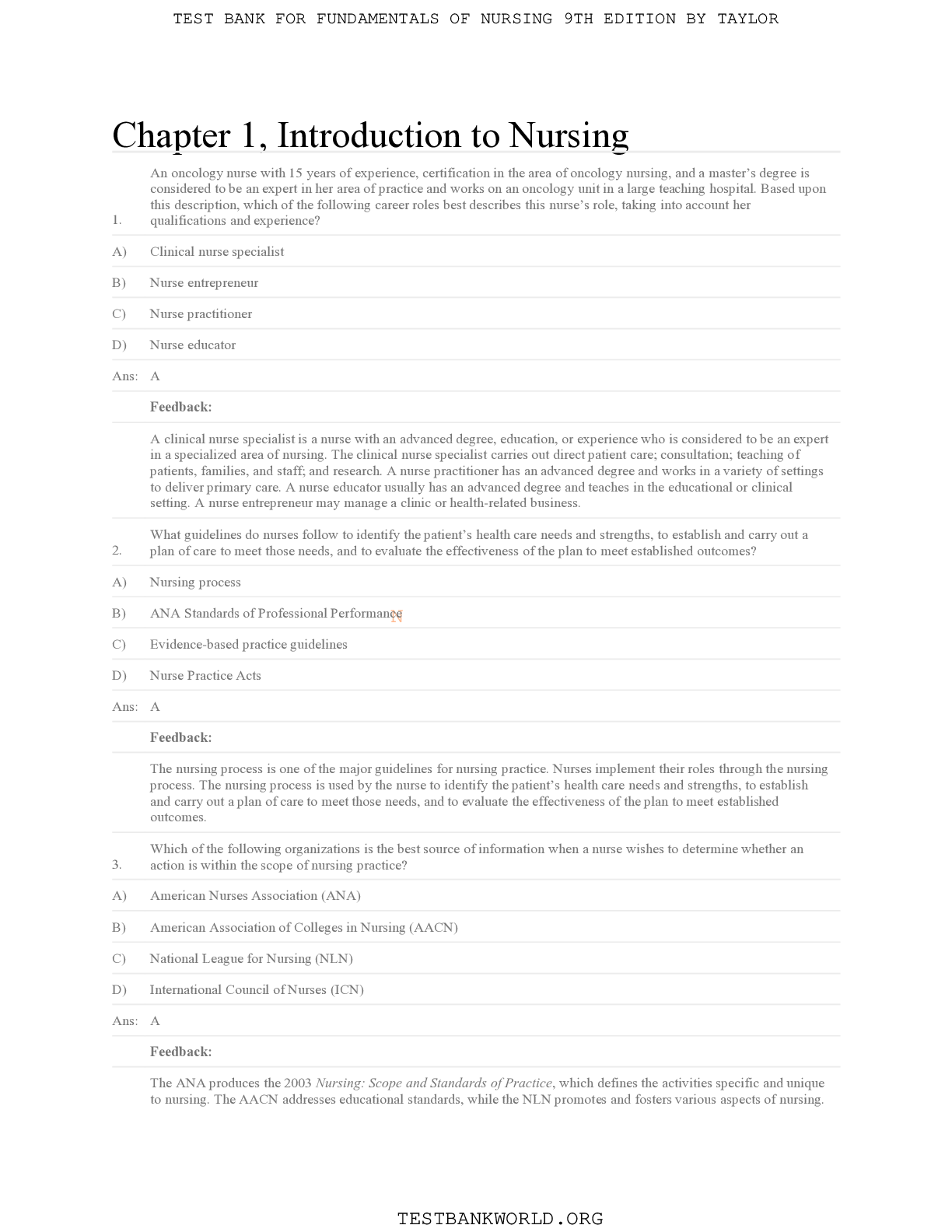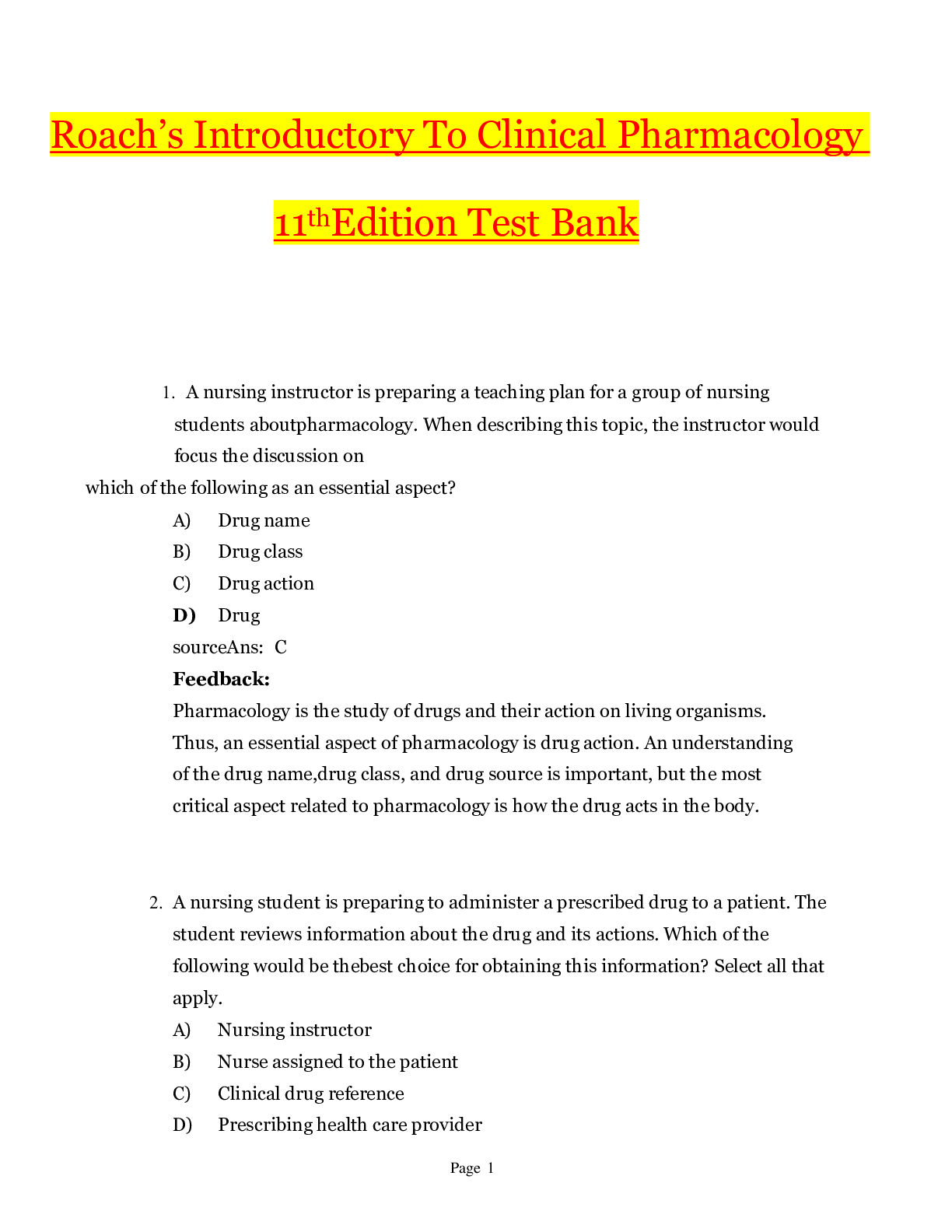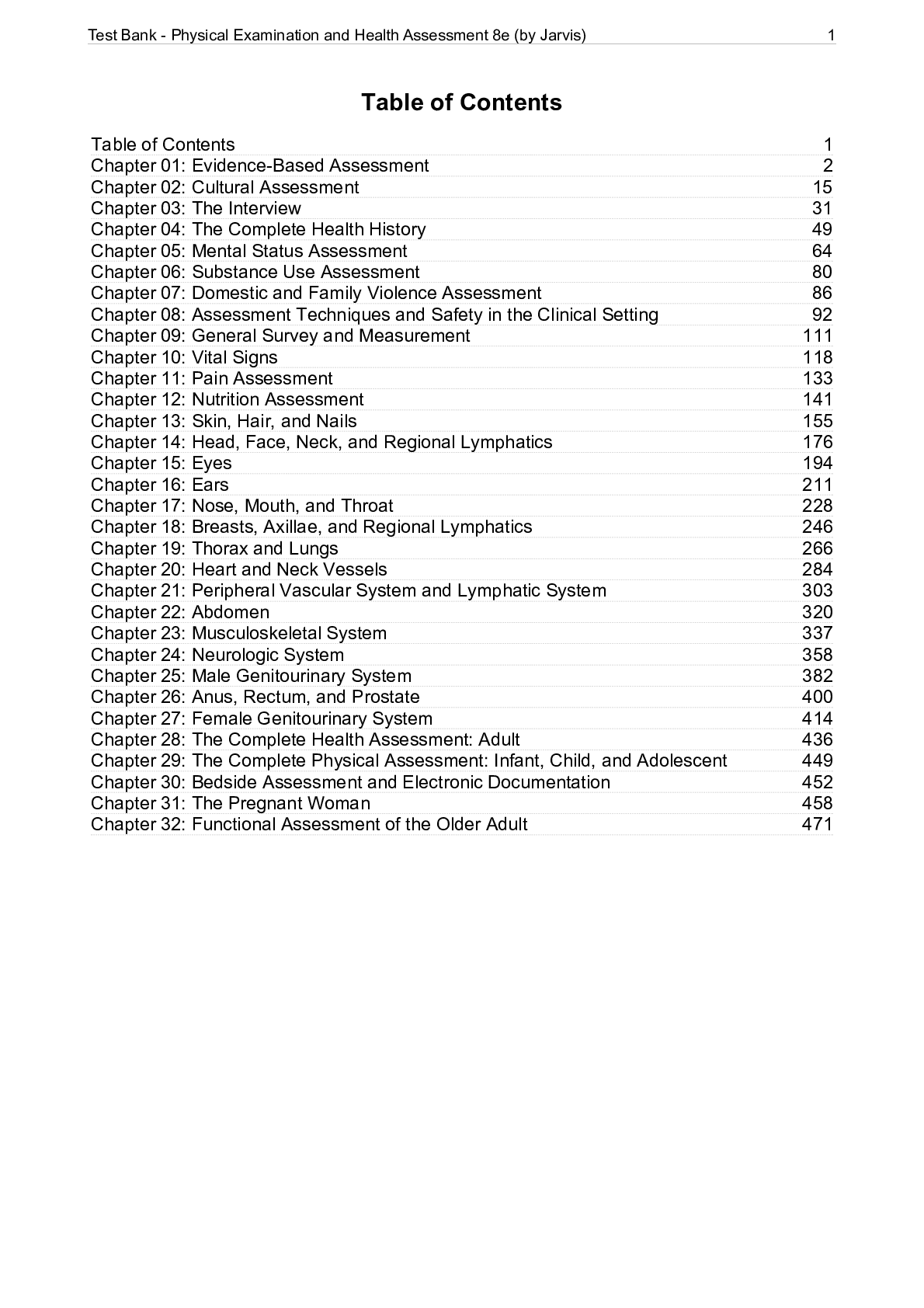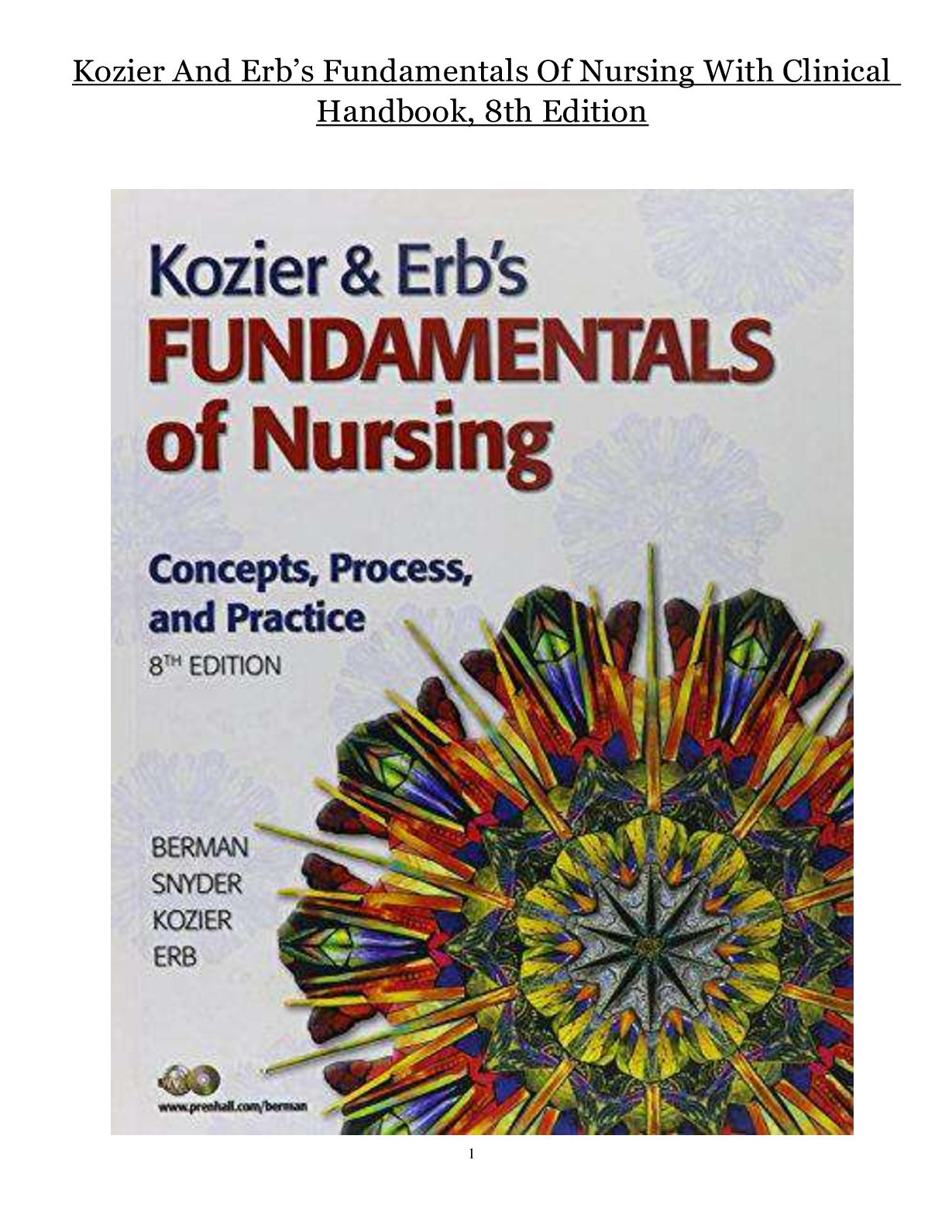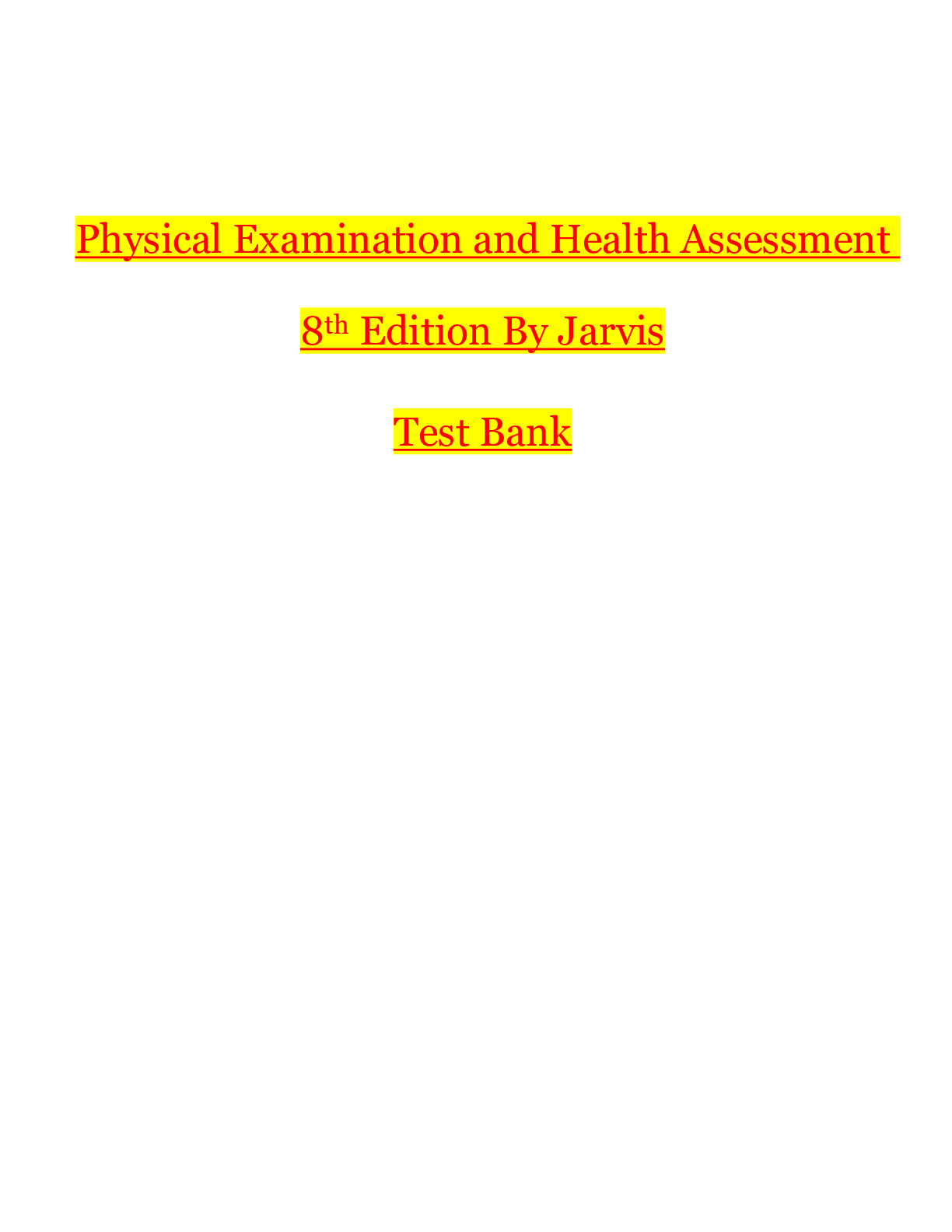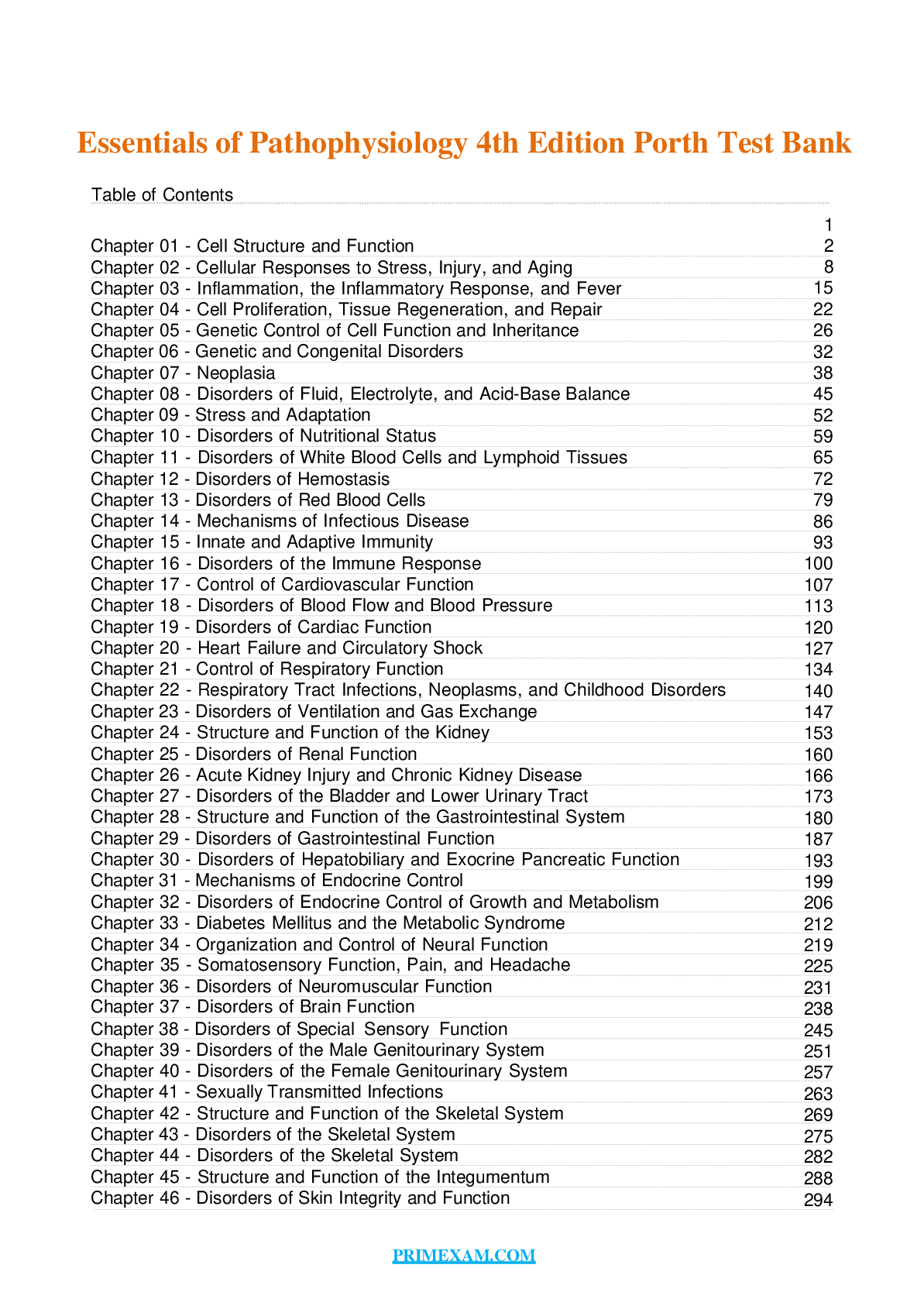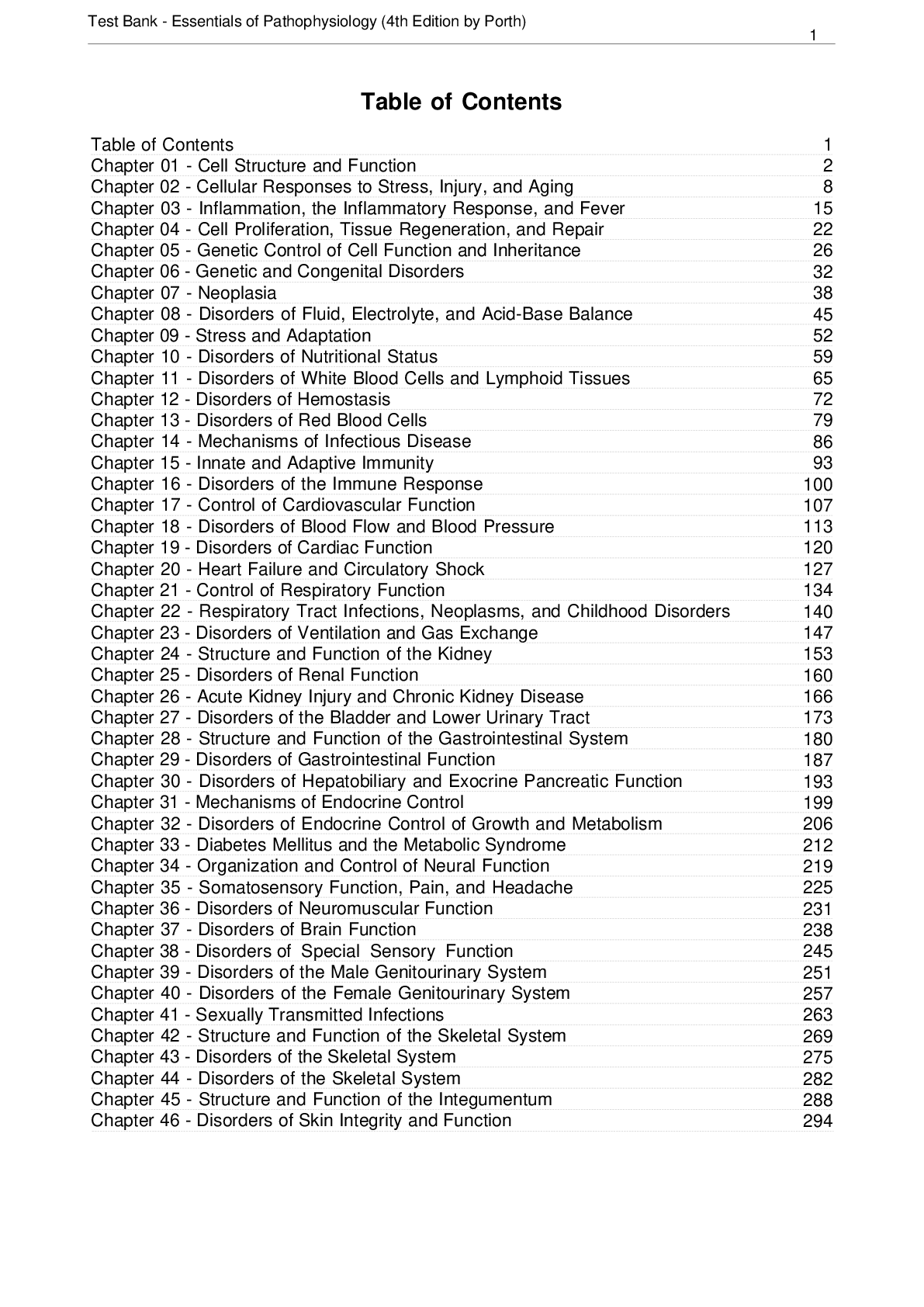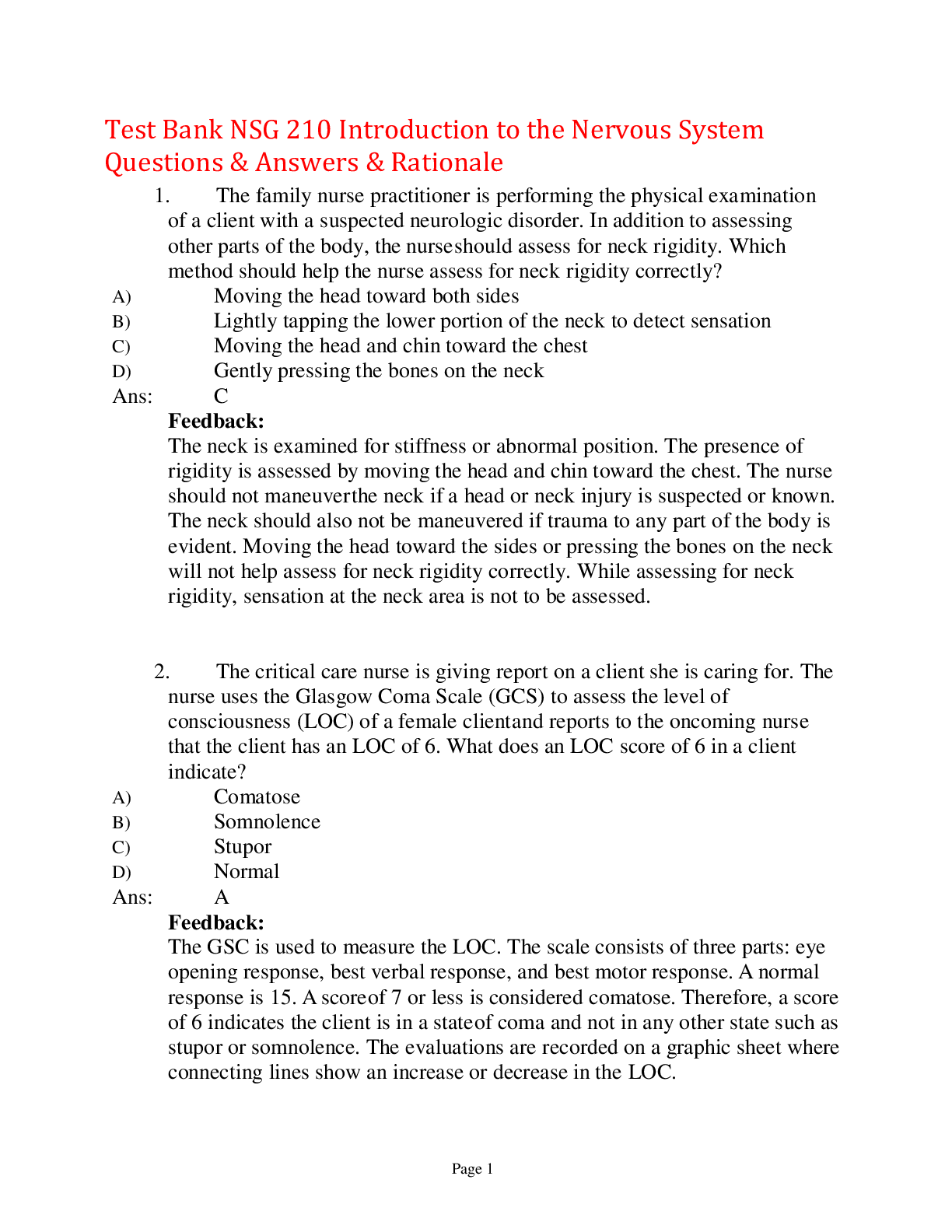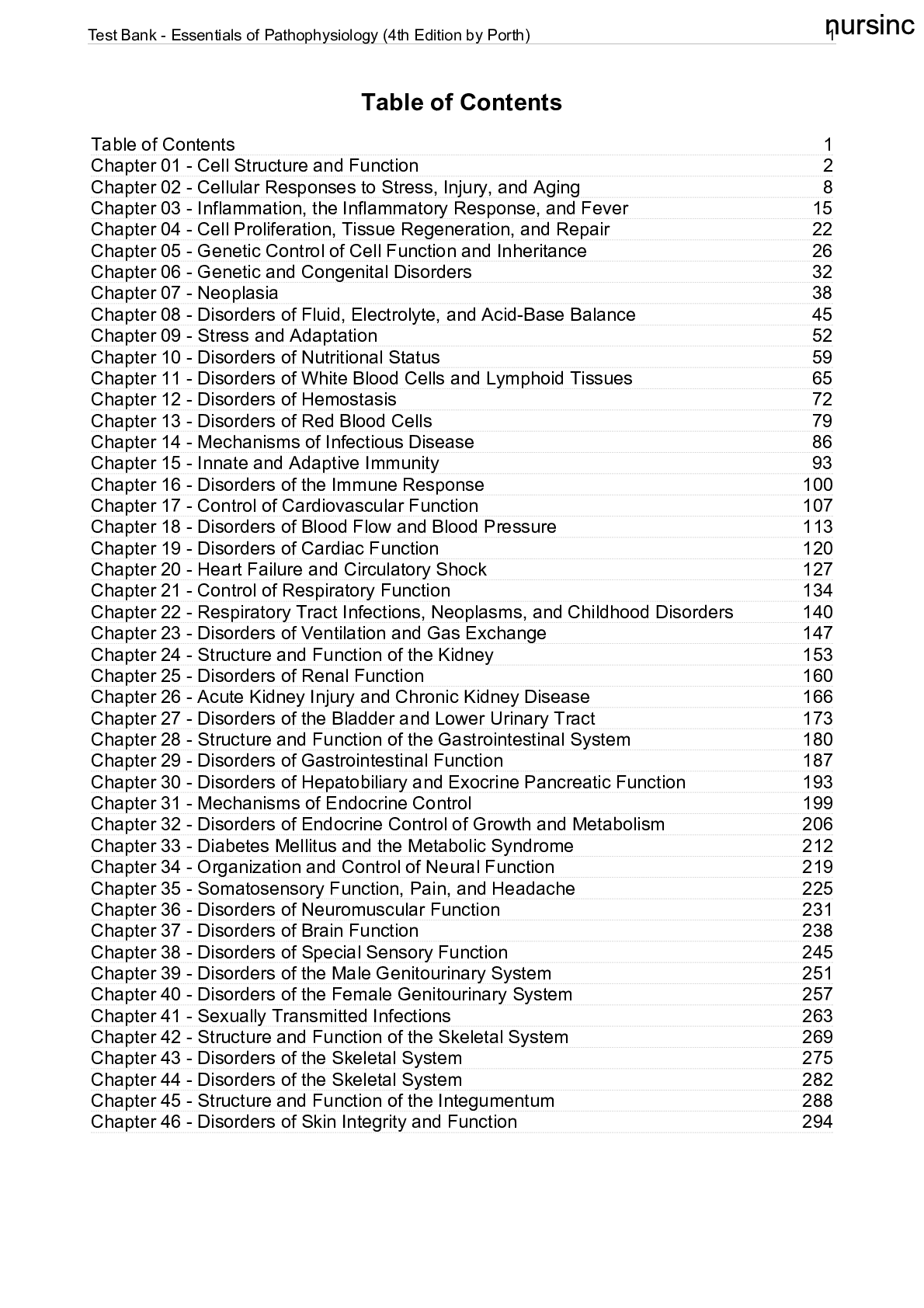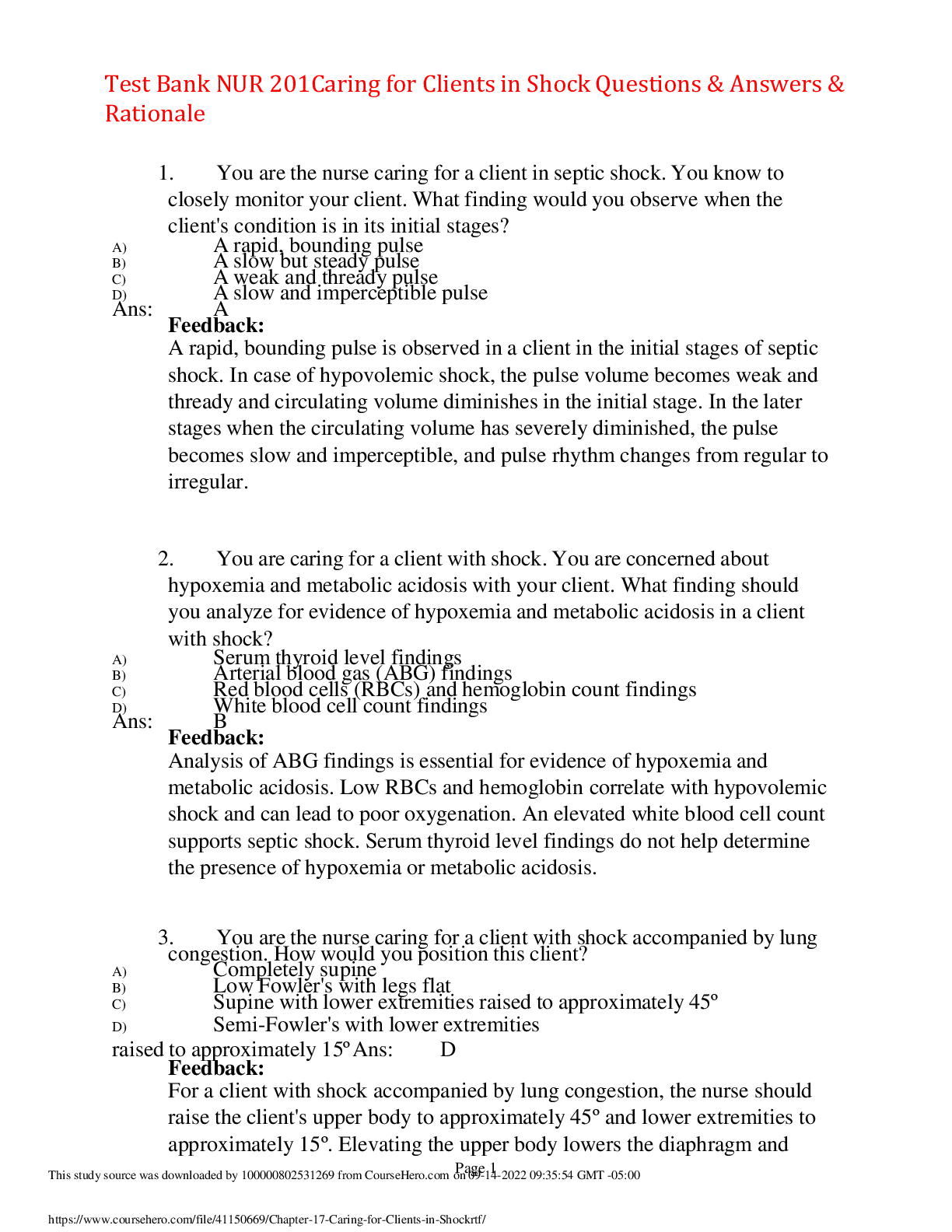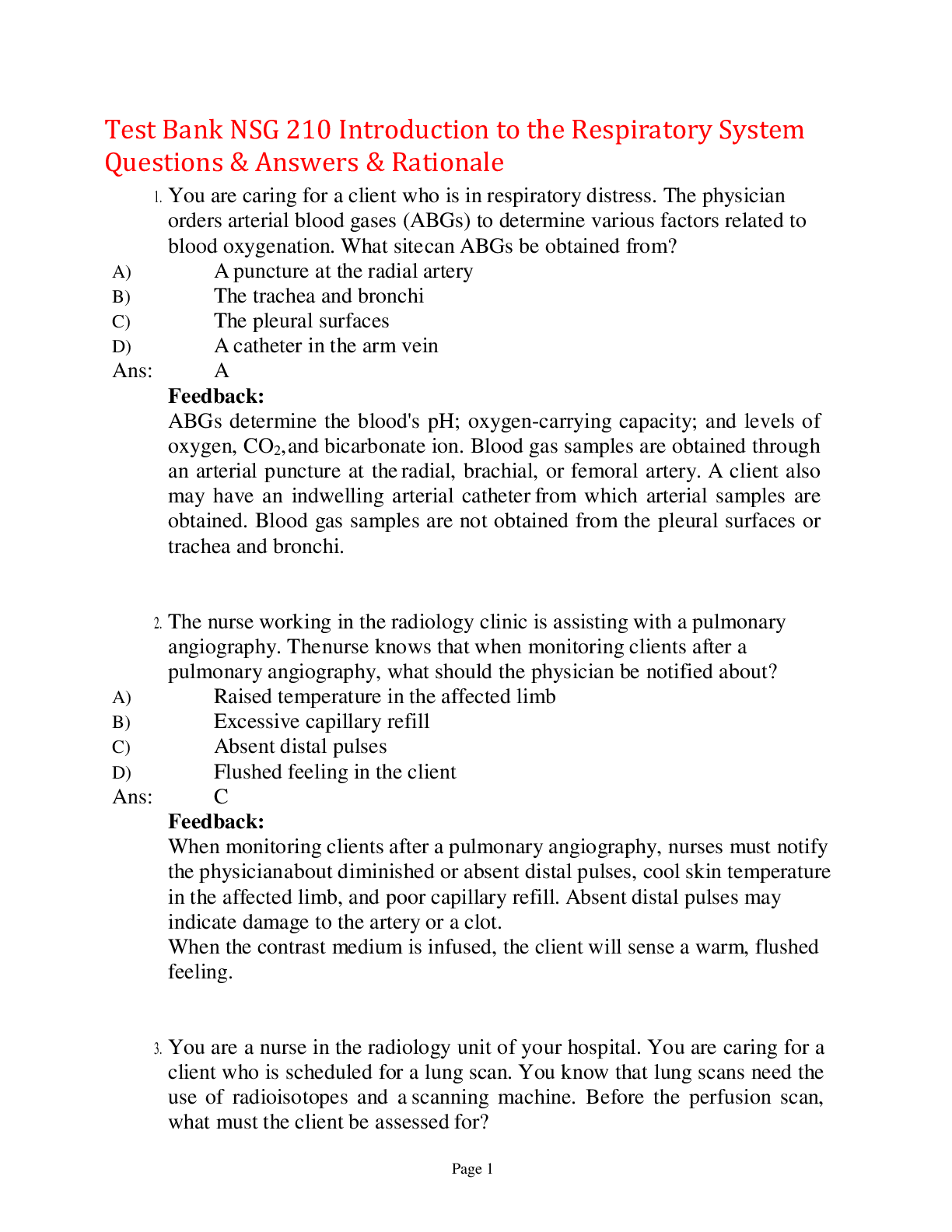Pathophysiology > TEST BANK > Essentials of Pathophysiology 4th Edition by Porth_2022/2023 | COMPLETE 47 Chapters, ANSWERS & RATIO (All)
Essentials of Pathophysiology 4th Edition by Porth_2022/2023 | COMPLETE 47 Chapters, ANSWERS & RATIONALE
Document Content and Description Below
Test Bank - Essentials of Pathophysiology _ 4th Edition by Porth Essentials of Pathophysiology _ 4th Edition by Porth Chapter 01 - Cell Structure and Function 1. The nucleus _________, which is ess... ential for function and survival of the cell. A) is the site of protein synthesis B) contains the genetic code C) transforms cellular energy D) initiates aerobic metabolism 2. Although energy is not made in mitochondria, they are known as the power plants of the cell because they: A) contain RNA for protein synthesis. B) utilize glycolysis for oxidative energy. C) extract energy from organic compounds. D) store calcium bonds for muscle contractions. 3. Although the basic structure of the cell plasma membrane is formed by a lipid bilayer, most of the specific membrane functions are carried out by: A) bound and transmembrane proteins. B) complex, long carbohydrate chains. C) surface antigens and hormone receptors. D) a gating system of selective ion channels. 4. To effectively relay signals, cell-to-cell communication utilizes chemical messenger systems that: A) displace surface receptor proteins. B) accumulate within cell gap junctions. C) bind to contractile microfilaments. Test Bank - Essentials of Pathophysiology (4th Edition by Porth) 2D) release secretions into extracellular fluid. 5. Aerobic metabolism, also known as oxidative metabolism, provides energy by: A) removing the phosphate bonds from ATP. B) combining hydrogen and oxygen to form water. C) activating pyruvate stored in the cytoplasm. D) breaking down glucose to form lactic acid. 6. Exocytosis, the reverse of endocytosis, is important in _______ into the extracellular fluid. A) Engulfing and ingesting fluid and proteins for transport B) Killing, degrading, and dissolving harmful microorganisms C) Removing cellular debris and releasing synthesized substances D) Destruction of particles by lysosomal enzymes for secretion 7. The process responsible for generating and conducting membrane potentials is: A) diffusion of current-carrying ions. - - - - - Chapter 46 - Disorders of Skin Integrity and Function 1. Manifestations of superficial dermatophytosis of the skin include: A) scaling. B) erythema. C) vesicles. D) infiltration. 2. Onychomycosis initially causes the toenail to appear ____ as the fungus digests the nail keratin. A) black B) cracked C) opaque D) eroded 3. A yeast-like Candida albicans fungal infection can be differentiated from a tinea fungal infection by the presence of: A) circular patches. B) satellite lesions. C) fungal spores. D) raised borders. 4. Warts develop when _____ are invaded by human papillomavirus (HPV). A) melanocytes B) keratinocytes C) sebaceous glands D) subcutaneous cells Test Bank - Essentials of Pathophysiology (4th Edition by Porth) 2955. Allergic and hypersensitivity dermatoses are characterized by: A) target lesions. B) dark erythema. C) epidermal edema. D) silver-white scale. 6. Papulosquamous dermatoses, such as psoriasis, are a group of skin disorders characterized by: A) scaling papules. B) granular scabbing. C) raised red borders. D) nodular ulcerations. 7. A thermal burn described as involving the entire epidermis and dermis is classified as: A) full third-degree. B) deep first-degree. C) partial second-degree. D) full-thickness second-degree. 8. The main cause of decubitus ulcers (bedsores) is _______ that impairs the flow of blood and lymph. A) external pressure B) shearing forces C) tissue edema D) thrombosis 9. Dysplastic nevi are precursors of malignant melanoma that are: Test Bank - Essentials of Pathophysiology (4th Edition by Porth) 296A) larger than other nevi. B) oval epidermal nests. C) dermal cords of cells. D) brown rounded papules. 10. Which one of the following skin disorders seen in elderly persons is considered a premalignant lesion? A) Cherry angiomas B) Actinic keratosis C) Solar lentigines D) Telangiectases 11. Which of the following disorders of the skin is most likely to respond to treatment with systemic antibiotics? A) Acne vulgaris B) Urticaria C) Atopic dermatitis D) Verrucae 12. Dry, itchy plaques on her elbows and knees have prompted a 23-year-old woman to seek care. The clinician has subsequently diagnosed the patient with psoriasis, a disorder that results from: A) increased epidermal cell turnover. [Show More]
Last updated: 11 months ago
Preview 1 out of 301 pages

Reviews( 0 )
Document information
Connected school, study & course
About the document
Uploaded On
Feb 13, 2021
Number of pages
301
Written in
Additional information
This document has been written for:
Uploaded
Feb 13, 2021
Downloads
0
Views
211

